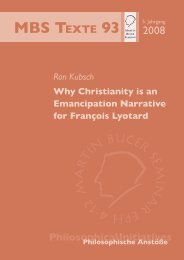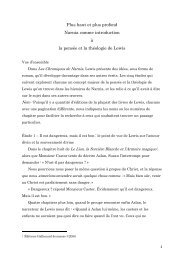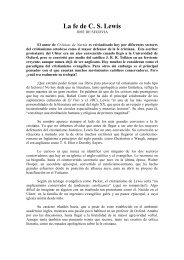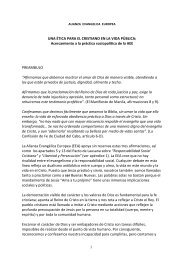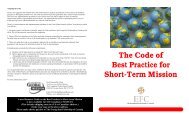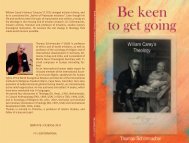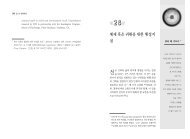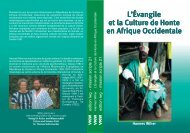WHEN YOU CROSS CULTURES - World Evangelical Alliance
WHEN YOU CROSS CULTURES - World Evangelical Alliance
WHEN YOU CROSS CULTURES - World Evangelical Alliance
You also want an ePaper? Increase the reach of your titles
YUMPU automatically turns print PDFs into web optimized ePapers that Google loves.
CHAPTER SEVEN<br />
AN EXAMPLE OF<br />
CONTEXTUALISED<br />
MINISTRY AMONG JAVANESE<br />
INTRODUCTION<br />
This chapter focuses on an example of contextualization among the Javanese<br />
in Indonesia. It does not discuss the worldview of the Javanese which is<br />
highly influenced by mysticism. For a further understanding of the Javanese<br />
worldview and beliefs, a study of Javanese mysticism or kebatinan is necessary.<br />
Mysticism runs parallel to the major religions which have influenced Indonesia<br />
– Hinduism, Islam, Buddhism and Christianity.<br />
Although Indonesia is the largest Muslim country in the world, pure<br />
Islam is practised by a small percentage of the population. The Javanese on the<br />
island of Java form the largest people. Javanese Islam is highly syncretistic.<br />
Studying kebatinan will give an important overview of Javanese religious life.<br />
Searching the internet under “kebatinan” will bring up some sources of<br />
anthropological articles and books.<br />
Clanging gongs, beating drums, glaring footlights ... what is happening?<br />
Here is the true story. 1<br />
For two years, a cross-cultural missionary experimented with traditional<br />
Javanese art forms in an attempt to contextualise the ministry. The aim was to<br />
convey the Gospel and biblical principles utilising traditional music and drama,<br />
so that Javanese could naturally respond to these concepts.<br />
The missionary and his family developed an interest in learning gamelan<br />
instruments. 2 In the process of learning the siter, 3 the missionary’s teacher and<br />
his wife trusted Christ. The teacher was a well-known wayang orang4 actor who<br />
performed at wayang kulit shows. 5 He was also leader of the gamelan. His wife<br />
was a skilful costume maker and make-up artist. As their lives were transformed<br />
by the Gospel, they wanted to communicate their faith to others.<br />
1 Adapted from a paper with the same title, presented at a seminar, 1988.<br />
2 Gamelan is the Javanese classical orchestra comprising approximately forty instruments, including bronze gongs, flutes, and<br />
xylophones. It provides the accompaniment for most traditional music and theatre.<br />
3 Javanese zither in three sizes.<br />
4 Wayang is a dance-drama, orang means a person. Wayang orang are actors-dancers who chant their parts, following careful<br />
movements in imitation of puppets, which are manipulated by a puppeteer.<br />
5 Ancient puppet theatre of Java. Shadows are cast on a white sheet by flat leather puppets manipulated by a puppeteer who also<br />
narrates the story.<br />
45




